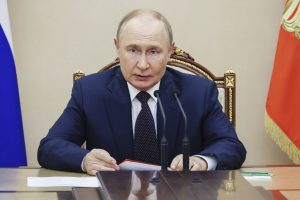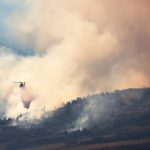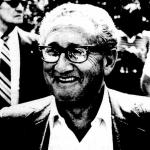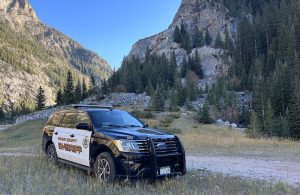Kobe Bryant to face rape trial

AP | AP
Los Angeles Lakers star Kobe Bryant will stand trial for allegedly raping a 19-year-old Eagle woman.
Eagle County Court Judge Fred Gannett on Monday bound the case over for trial in District Court. Bryant is scheduled to make his first appearance in District Court at 9 a.m. Nov. 10, where he could enter a plea. That could be his only scheduled court appearance until the trial.
Gannett chided prosecutors for presenting “a minimal amount of evidence,” but said it was enough to order the trial. Gannett said what evidence prosecutors did show suggested “submission and force.” The evidence included photographs of the woman’s injuries, as well as her blood on her underwear and on Bryant’s T-shirt.
Gannett’s ruling follows two days of testimony during Bryant’s preliminary hearing.
District Attorney Mark Hurlbert said he was “pleased” by the decision.

Support Local Journalism
“We had confidence all along in the case and presentation of evidence and we were therefore confident it would be bound over to District Court,” said Hurlbert.
Defense attorney Pamela Mackey said they are ready to go to battle.
“We are, of course, disappointed by the decision today,” said Mackey in a written statement.
“As the court notes in its decision, almost all of the evidence viewed either independently or collectively does not support a finding of probable cause – let alone proof beyond a reasonable doubt, the test to be applied at trial,” wrote Mackey. “It is only because the court was constrained by Colorado case law requiring ALL inferences to be made in the light most favorable to the prosecution that this matter barely survived the test of the preliminary hearing.”
Bryant practiced Monday with the Lakers. After practice, he was asked how much anxiety he was feeling.
“Basketball, zero anxiety. Other stuff, a little anxiety,” he said. “‘But now I just pretty much, you know, give it up. I’ve pretty much done all I can. Now I’ll let God carry me the rest of the way. I feel comfortable with that.”
Little clear, so far
Gannett wrote that most of the evidence presented could be interpreted in a variety of ways.
“Almost all of the evidence introduced at the preliminary hearing permits multiple inferences which, when viewed either independently or collectively, and upon reasonable inference, do not support a finding of probable cause. Simply put, this court could not make a finding of probable cause … absent reliance upon those inferences supportive of the people’s case.” wrote Gannett.
Gannett wrote that although Bryant’s attorneys presented evidence attacking the alleged victim, he could not disregard the alleged victim’s statements to Eagle County Sheriff’s Detective Doug Winters as implausible, “notwithstanding inconsistencies in her statements and other evidence.”
In her closing arguments, Mackey asserted the alleged victim was not worthy of Gannett’s belief.
While disagreeing with Mackey, Gannett remained unimpressed with the prosecution’s effort during the preliminary hearing.
“The People presented, despite the Court’s consistent comments and admonitions concerning the amount and the nature of the evidence to be presented at the preliminary hearing, what can only be described as a minimal amount of evidence, relying substantially on the use of hearsay evidence,” wrote Gannett.
However, said Winters’ observations of both Bryant and the alleged victim, as well as Winters’ observation of the alleged victim’s blood on her underwear and Bryant’s T-shirt were considered nonhearsay evidence.
Gannett said, though, that photos of the lacerations and bruise, submitted as evidence by the prosecution, were not much use in coming to his decision. He said that without interpretation, the photographs reportedly depicting two tears of one centimeter each had limited value as evidence. He also pointed out that prosecutors did not explain the source of the bruise on the alleged victim’s left cheek – a bruise about half the size of a penny.
“The photographs demonstrate some injury to the genital area and a bruise to the cheek. This demonstrative evidence, when construed in the light most favorable to the people, are evidence of submission and force,” wrote Gannett. “The presence of blood on the victim’s underwear and defendant’s T-shirt are further evidence of submission and force … The alleged victim’s statement … presents evidence of sexual intercourse against her will and subject to the application of force, resulting in pain and injury.”
Perspectives
Legal experts were diametrically opposed in their viewpoints on the prosecution’s case, and Gannett’s ruling.
“Rarely have I seen a message on probable cause that was that blunt in telling the prosecutor that he was hanging by a thread,” said Robert Pugsley, a professor at Southwestern University School of Law in Los Angeles.
Not so fast, said former Denver District Attorney Norm Early.
“It’s a bit early for either side to be declaring victory,” said Early. “The prosecution gave just enough in terms of quantity and just enough in terms of direct evidence.”
Mackey wrote that Gannett’s decision does not change her conviction that Bryant is innocent.
“Judge Gannett’s decision does not change the fact that this case cannot be proven beyond a reasonable doubt and should never have been filed,” wrote Mackey. “The standard at the preliminary hearing is that of probable cause. The standard at trial is a far higher burden: proof beyond a reasonable doubt. When this case is tested by that standard, Kobe Bryant will be found innocent.”
Mackey wrote that they decided to go forward with the preliminary hearing to put the prosecution’s case to the test.
“Because Kobe Bryant is innocent, the prosecution’s case simply had to be tested despite the fact that the odds were against us prevailing,” wrote Mackey.
“We will prevail at trial.”
The Associated Press contributed to this report.
The abridged version of the incident
Los Angeles Lakers guard Kobe Bryant is charged with one count of felony sexual assault for allegedly raping a hotel worker in his suite at the Lodge and Spa at Cordillera in Edwards on June 30. Bryant was a guest at the hotel, and had knee surgery the next day at Vail’s Steadman Hawkins Clinic. He had not told the Lakers he was traveling to Colorado, or that he was having surgery. Ironically, Lakers coach Phil Jackson was also in the area that night, barely six miles from Bryant’s hotel when the incident occurred.
If he’s convicted, Bryant faces up to life in prison. He has said the sex was consensual.
Bryant is charged with what used to be called forcible rape, which means he is charged with having sexual intercourse with his alleged victim against her will either through coercion or force.
As the prosecution presented its case on Oct. 9, Deputy District Attorney Gregg Crittenden questioned Eagle County Sheriff’s Detective Doug Winters, who summarized the evidence. Winters’ testimony included summaries of the alleged victim’s statement, Bryant’s statement (in private sessions), how the evidence was collected, the scope of the investigation, the alleged victim’s demeanor, the significance of the physical evidence as relayed to him by the Sexual Assault Nurse Examiners who tested Bryant and the alleged victim, and evidence analysis by the Colorado Bureau of Investigation.
Bryant’s preliminary hearing lasted nearly two days and included graphic testimony about an encounter prosecutors say turned violent after flirting by both Bryant and his alleged victim.
Winters testified the woman went to Bryant’s room at the Lodge and Spa at Cordillera shortly after checking him and his two bodyguards in to the resort. She assigned Bryant and his bodyguards to rooms at opposite ends of the 56-room hotel.
While on the way to his room, Bryant called the alleged victim aside, away from his body guards, and asked her to return to his room and escort him on a tour of the hotel and facilities. Following the tour and a chat with the hotel bellman and some guests, they returned to Bryant’s room. The two chatted and began kissing and the alleged victim had her arms draped around Bryant’s neck, Winters said.
But a few minutes later, when she tried to back away, she told Winters that Bryant grabbed her by the throat, bent her over a chair and raped her, asking her several times not to tell anybody, Winters testified.
She told Bryant “no” at least twice, and he stopped only after she pulled his hand off her neck, Winters said.
The woman was left with two vaginal tears each about one centimeter long, and several smaller tears, consistent with sexual assault, Winters said. Her blood was found both on the underwear she wore that night, and on Bryant’s shirt, Winters said. Her blood, as well as another man’s semen and hairs, were found in underwear she wore to her rape exam, along with semen inside her from another man in addition to Bryant.
Winters acknowledged under cross-examination by Bryant’s defense attorney Pamela Mackey that the woman had sex with another man who used a condom on June 28, before her encounter with Bryant.
Winters said that, according to Sexual Assault Nurse Examiners, the alleged victim’s injuries were consistent with penetrating genital trauma and not consensual sex.
During cross examination, Mackey brought up inconsistencies about when the alleged victim might have first said “no.”
Winters acknowledged the alleged victim told him she expected Bryant to “put a move” on her when she accepted the invitation to his room.
District Attorney Mark Hurlbert said after the preliminary hearing that he had not presented his entire case, saying a preliminary hearing requires a judge to look at the evidence in a way that is most favorable to prosecutors.










